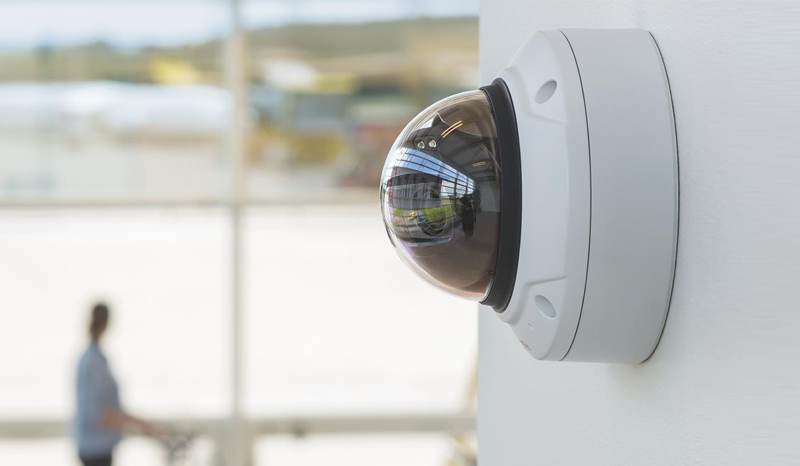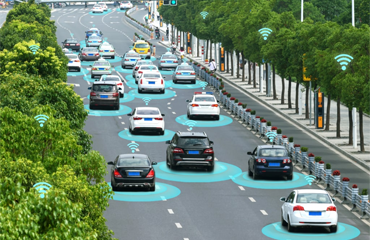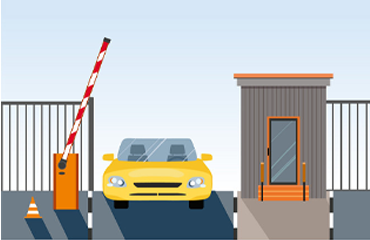- +971 52 814 2054
Free Consultation
Please fill this form.
Network / IP CCTV Camera Abu Dhabi

Network / IP CCTV Camera Abu Dhabi
Admin Jan 13,2023
What is an Internet Protocol (IP) Camera?
Internet Protocol cameras, conjointly referred to as IP cameras or network cameras, provide digital video surveillance by causing and receiving footage over the web or local area network (LAN). As their name suggests, IP cameras connect with a network through WiFi or an influence over LAN (PoE) cable. They’re typically used with network video recorders (NVRs) and generally digital video recorders (DVRs), creating them a typical solution for enterprise video surveillance.
Features of IP Cameras
- Cloud and built-in Storage
Storage space may be a large consideration once surveying IP cameras. By law, several firms are needed to retain security footage for a particular quantity of your time depending on their business and native mandates. Most surveillance systems can transmit video data onto cloud storage, a Solid-State Drive (SSD), or a hard disk drive (HDD). Advanced solutions store footage locally on an SSD or HDD while conjointly backing it up within the cloud; these “hybrid cloud” security systems are considered safer and additional reliable than systems that trust only one method.
- PoE Capabilities
IP cameras that can be powered over a Poe connection eliminate the risk and cost of running electrical wires. Compared to purely wireless cameras, PoE IP cameras tend to have additional stable data transmission and are less likely to encounter interference from nearby devices.
- Video data Encryption
How secure an IP camera is depends on its level of data info encryption and network security. Encryption may be a way to conceal info by scrambling data so only authorised parties will decode it. Since IP cameras are usually targeted in IoT breaches, utilising *modern security standards are key to preventing hackers from lifting company info and even disabling whole systems. There are 2-states of encryption, at rest and in transit.
- At Rest Encryption
Data encrypted “at rest” means data is protected whereas on the camera. RSA and AES are 2-samples of Public Key Infrastructure (PKI) encryption standards that ensure that anyone who accesses video info won’t be ready to extract it from onboard storage.
- In Transit Encryption
Data encrypted “in transit” means data is protected when it’s travelling over the network or being transferred from local to cloud storage. Secure systems encrypt data in transit victimisation HTTPS/SSL over Port 443 and only create outgoing connections to dedicated cloud services.
Extra features of IP Cameras
- Instant Video Sharing
One capability of modern IP police work systems is sharing video clips through SMS texts, emails, or live links. This decreases the quantity of your time it takes to alert authorities once incidents occur and immediate action is needed.
- Video Quality
IP cameras are usually known to provide higher video quality compared to analog cameras historically utilised in CCTV systems. Because they transmit digital signals, they will capture greater detail. This makes it possible for several IP security systems to incorporate advanced video analytics like facial matching into their software system.
- Edge-Based Video Analytics
Modern surveillance systems incorporate artificial intelligence (AI) and edge-based analytics to sight individuals and objects within the camera’s field of view. Software systems with deep learning capabilities will use facial and vehicle matching to alert users of incidents in real-time and speed up investigations. These advanced surveillance systems additionally enable users to define restricted areas among the camera’s view and be notified if the significant activity is detected during a particular time of day.
- Steady State Streaming
IP cameras that operate in a “steady state” consume significantly less bandwidth, creating additional scalability and less expensive for enterprises and huge organisations. In a steady state, cameras send a constant stream of encrypted thumbnails and connected metadata to the cloud once each twenty seconds. A steady-state IP camera operates at about 20 kbps, which is roughly 1/100 of a standard cloud camera that streams at 1-2 Mbps. Given the low bandwidth footprint, over a hundred steady-state cameras will share an equivalent network connection and consume an equivalent bandwidth as one traditional cloud camera.
Types of IP Cameras
- PTZ IP Camera
Pan-tilt-zoom (PTZ) cameras will modify their field of view and angle via a remote operator, permitting users to track events with greater accuracy. They'll cover potentially massive areas and are usually used to monitor public outdoor areas.
- Fixed IP Camera
Fixed IP cameras operate during a static position and supply a single view among the camera’s field of vision, continuously surveilling subjects within a predetermined frame. fixed cameras are widely used both outdoors and inside, generally in retail stores and business offices. Compared to PTZ cameras, they need less bandwidth to support.
- PoE or PoE + IP Camera
PoE IP cameras use a coaxial cable (usually Cat 5 or 6) to provide each electric power and data at the same time. This eliminates the need to run 2 cables for power and data separately, therefore reducing the quantity of hardware needed. With fewer components to manage, PoE systems tend to be easier to install and price less to keep up compared to traditional systems. The difference between PoE and PoE+ is the quantity of electricity each one transmits to power their systems. Standard PoE systems power most IP cameras and transmit up to 15 watts of electricity. PoE+ systems transmit up to 30 watts and are sometimes used in additional high-powered cameras with their heating and cooling mechanisms.
- Wireless IP Camera
Wireless IP cameras connect with a LAN router to send video information. The footage is then transferred to cloud storage or the camera’s local inbuilt storage. Wireless IP cameras are a decent solution for small homes, however, a wired camera system is less vulnerable to interference and is recommended for larger areas.
MCC Approved Company
Looking for Certified Trainer ?
We are ADMCC Approved company (Abu Dhabi Monitoring and Control Center). We Provide the best solution to you especially under success of MCC and for the prospective change.
Get AppointmentService We Provide
We are experts in CCTV Installation in UAE, Get the most affordable & secureCCTV solutions, IT Data Cabling, Network Cabling, Telephone Cabling, CCTV cabling Services.

Biometric System
Our Biometric Access Control system supports advanced live finger detection and face detection.
Read More
GPS Vehicle Tracking
The Most Modern GPS Based Vehicle Tracking Systems, Fleet Management, Vehicle Monitors.
Read More
Gate Barrier System
We make best Gate Barrier and Automatic Sliding / Entrance Gates Smooth, Easy & Noise Free.
Read More


















